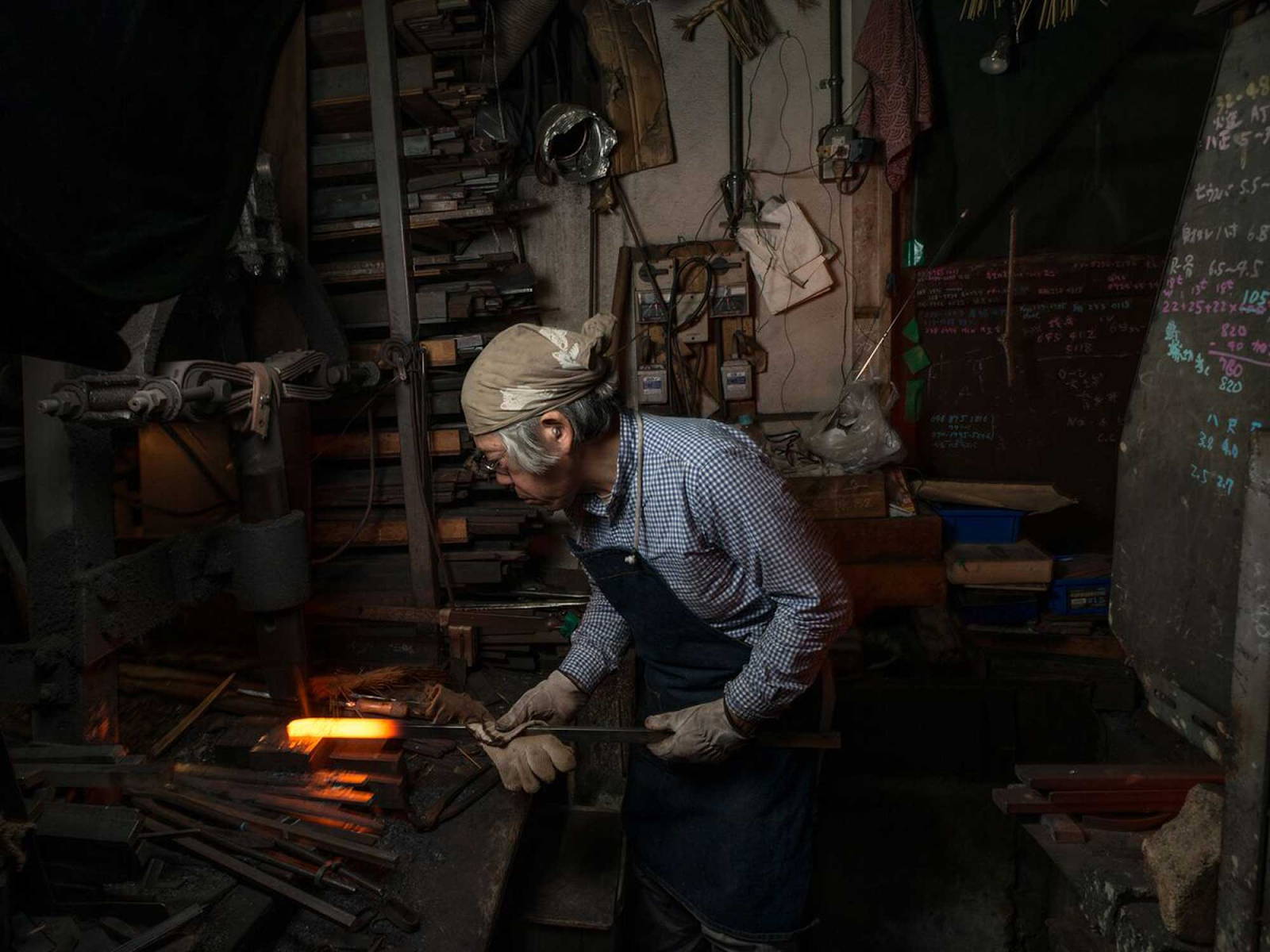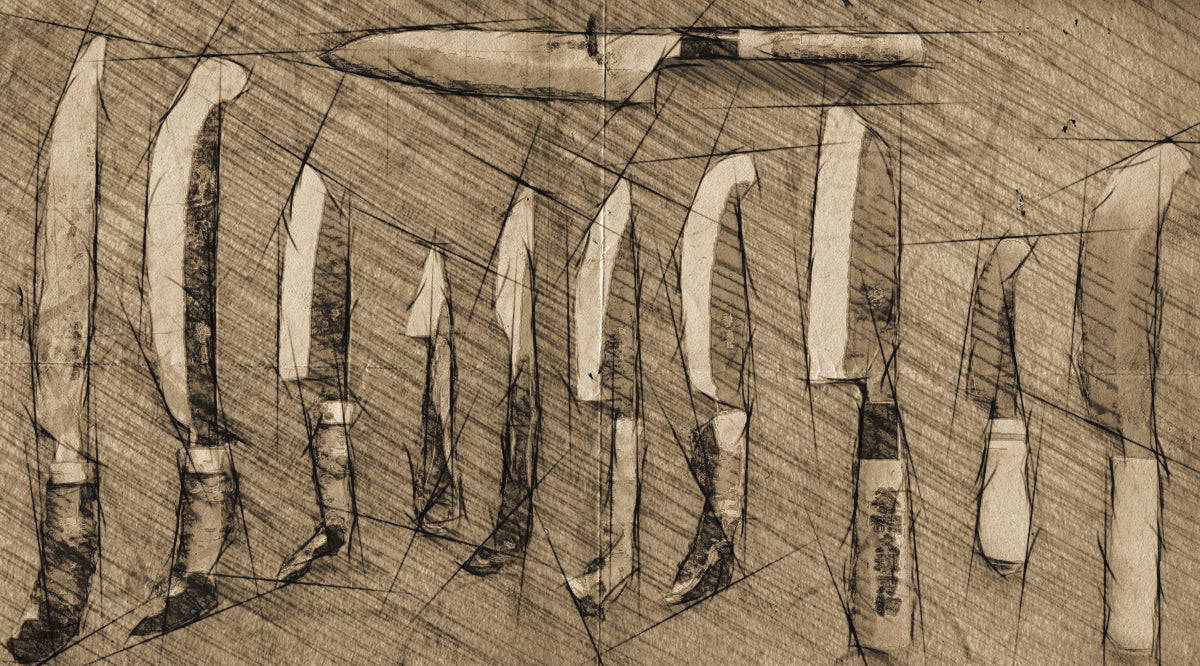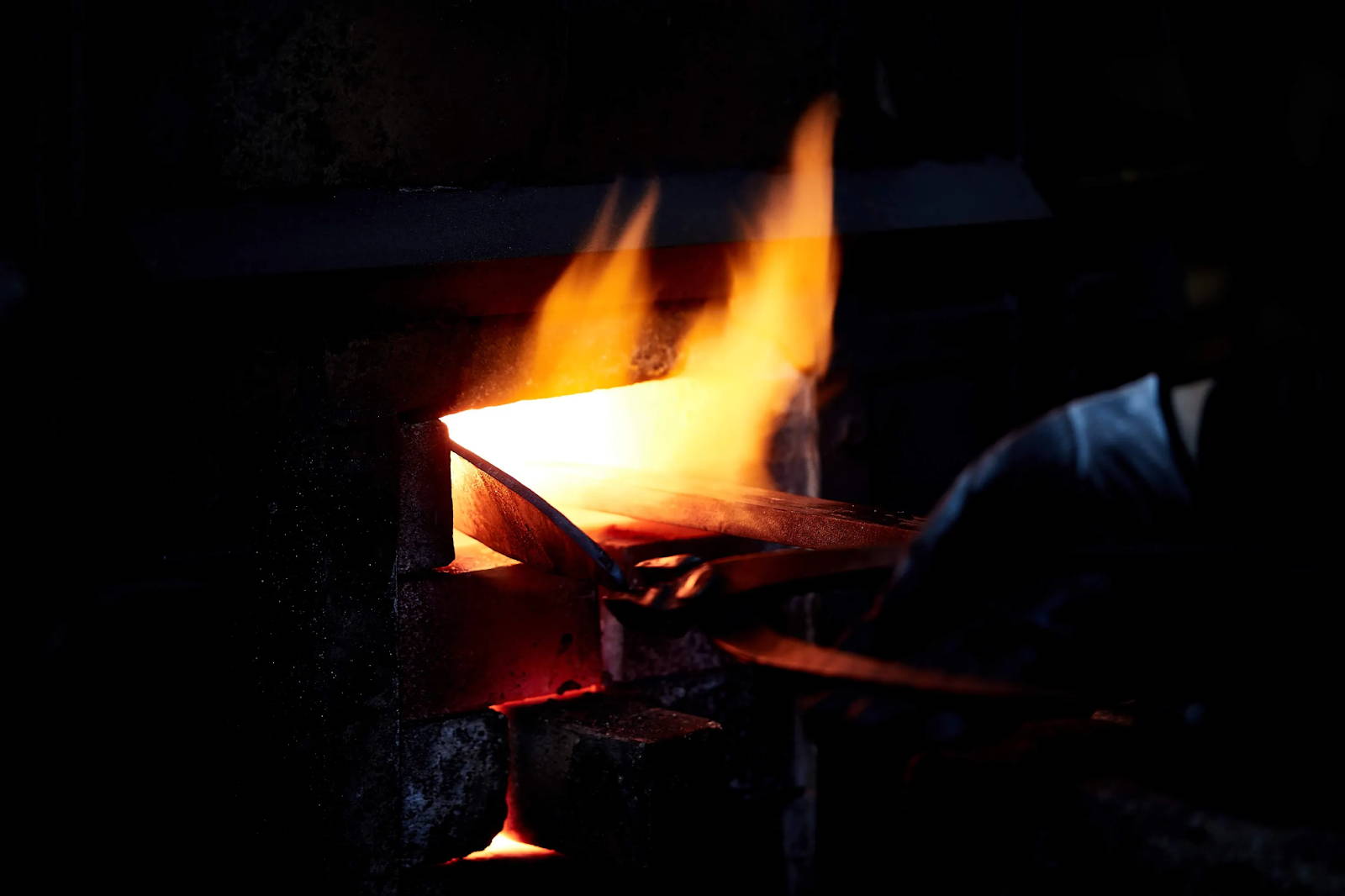This process begins with crafting a perfectly-shaped knife which requires expertise and efficiency in the forging technique. The work of forging encompasses a meticulous process that relies on skill, precision, and patience. The process of forging Japanese knives is a perfect balance between skillful hands and raw materials, resulting in blades of unparalleled quality and beauty.
In a typical Japanese knife forging process, the expert blacksmiths include heating, hammering, and shaping layers of high-carbon steel or any other preferable material, carefully manipulating the metal to achieve the desired blade geometry. Most of these knives are designed in a single-bevel shape.
Each strike of the hammer is deliberate, guided by years of experience and a profound understanding of the material's behavior. The blacksmith's keen eye ensures that the knife emerges with a razor-sharp edge, balanced weight distribution, and an aesthetically pleasing formation.
The choice of steel used in Japanese knife-making is of utmost importance. Materials like carbon steel or high-quality stainless steel are meticulously selected for their exceptional hardness, edge retention, and ability to be honed to an extraordinary sharpness. The fusion of superior steel with the blacksmith's craftsmanship gives birth to knives that effortlessly slice through ingredients, revealing the true artistry behind their creation.






Leave a comment
This site is protected by hCaptcha and the hCaptcha Privacy Policy and Terms of Service apply.